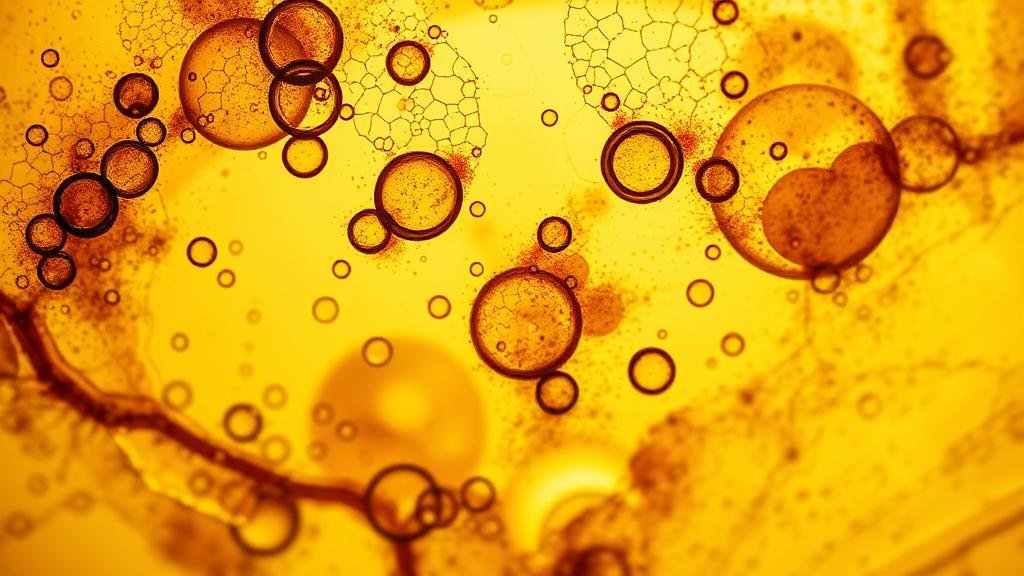Amber with a View: Fossilized Air Bubbles and Prehistoric Atmospheres
Amber with a View: Fossilized Air Bubbles and Prehistoric Atmospheres
For rockhounds and mineral collectors, amber offers a unique glimpse into the distant past, not only as a beautiful resinous gemstone but also as a time capsule preserving ancient ecosystems. One of the most fascinating aspects of amber is its ability to encapsulate air bubbles, which serve as invaluable indicators of prehistoric atmospheres and environments.
Understanding Amber: Composition and Formation
Amber is fossilized tree resin that can be millions of years old, typically dating back to the Mesozoic era, around 230 million years ago. The main components of amber include:
- Farnesane (a hydrocarbon compound)
- Resin acids, which can include succinic acid, known for its therapeutic properties
- Essential oils that contribute to its scent and color variations
The formation of amber begins with the exudation of resin from trees, a natural response to injury or stress. Over time, heat, pressure, and geological activity transform this resin into amber. The conditions under which amber forms are crucial for the preservation of air bubbles, which become trapped as the resin solidifies.
The Significance of Fossilized Air Bubbles
Fossilized air bubbles in amber can provide insights into the atmospheric conditions of ancient Earth. These bubbles are typically less than a millimeter in size and can contain gases such as:
- Nitrogen (82% in modern atmosphere)
- Oxygen (21% in modern atmosphere)
- Carbon dioxide (0.03% in modern atmosphere)
Research shows that the concentration of carbon dioxide in the atmosphere may have varied significantly throughout geological periods. For example, a study published in the *American Journal of Science* highlighted findings from amber samples that suggested prehistoric carbon dioxide levels were around 2-3 times higher than today. This revelation provides scientists with critical data on climate change, vegetation growth, and animal evolution during the time amber was formed.
Analyses and Techniques for Examining Fossilized Air Bubbles
To study these fossilized bubbles, scientists employ several techniques, including:
- Gas Chromatography: This technique allows for the separation and analysis of gas components within the bubbles, enabling quantification of specific gases, including greenhouse gases.
- Mass Spectrometry: By measuring the mass of particles, researchers can identify the isotopic composition of gases trapped in the bubbles, offering clues about atmospheric conditions.
Such analyses can help reconstruct ancient climates and ecosystems, providing context for evolutionary biology and geology. For example, air bubbles extracted from amber in Myanmar have revealed data that has changed our understanding of the behavioral patterns of ancient insects and plants.
Practical Tips for Collectors
If you are a rockhound or mineral collector interested in amber, consider the following practical tips:
- Seek Quality Samples: Look for amber pieces that visibly contain trapped air bubbles or inclusions of ancient life (e.g., insects, plant matter). Such specimens can significantly increase their value and scientific interest.
- Understand Origin: Be aware of the source of your amber. Baltic amber is known for its higher quality and is one of the most commercially valued varieties. Other notable sources include Dominican, Mexican, and Burmese amber.
Remember to verify the authenticity of amber, as the market is filled with synthetic alternatives. When in doubt, consult with experts or reliable sources to confirm that what youre purchasing is genuine.
Conclusion: The Intriguing Intersection of Science and Beauty
Amber with a view–fossilized air bubbles within this gem–connects us with the distant past, offering priceless insights into prehistoric atmospheres. For collectors, amber represents not only a captivating specimen but also a gateway to understanding the Earth’s climate history and evolutionary dynamics. By focusing on quality, authenticity, and the science behind amber, enthusiasts can truly appreciate the incredible stories these ancient treasures have to tell.
As you continue your journey as a collector, remember that each piece of amber may hold secrets waiting to be uncovered, making the pursuit of these gems both thrilling and educational.



